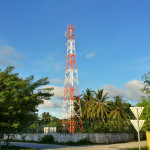Thirty years since the first reported cases of acquired immunodeficiency syndrome (AIDS) in 1981, the response to the HIV/AIDS epidemic has been unprecedented, especially in terms of global and national initiatives.
Substantial progress has been made, such as a 31 percent reduction in the number of new infections between 2001 and 2009 in South-East Asia. A revolutionary new approach to treatment endorsed by UNAIDS and WHO, which includes improved, lower-cost drugs, simplified HIV diagnostic technologies, improved delivery systems, and innovations in prevention of HIV infection, give hope for achieving universal access to prevention, care and treatment of HIV/AIDS, even in resource-constrained settings.
Yet, the challenge is far from over. HIV still remains a formidable foe, affecting 33.3 million people globally, including 2.5 million children. Despite years of concerted global efforts and investments, there is still neither a cure nor an effective vaccine for the disease.
However, over time, the profile of the HIV epidemic is evolving from a life threatening to a chronic disease, thanks to availability of more effective drugs and efficacious service delivery models involving communities and people living with HIV/AIDS. With changing realities, it is time, then, to reflect and re-strategize in the long-drawn war against HIV/AIDS. Fundamental to success is acknowledging that HIV/AIDS is a social and developmental issue as much as a health one.
The impact on women and children is devastating. An estimated 1.3 million women aged 15 and above currently live with HIV in the WHO’s South-East Asia Region (Bangladesh, Bhutan, Democratic People’s Republic of Korea, India, Indonesia, Maldives, Myanmar, Nepal, Sri Lanka, Thailand and Timor-Leste).
The estimated number of children living with HIV has increased by 46 percent during 2001 – 2009. Of the 448 million cases of sexually transmitted infections that occur globally, 71 million are in South-East Asia. Due to low coverage of the prevention of mother-to-child transmission (PMTCT) programme in the South-East Asia Region, a large number of babies born to HIV-positive mothers acquire HIV infection in the womb.
Despite considerable diversity in the HIV epidemic among the countries of the Region, unsafe sex and injecting drug use are the main drivers. Five countries -India, Indonesia, Myanmar, Nepal and Thailand – account for a majority of the disease burden. Sexual transmission accounts for the majority of cases in Bhutan, India, Myanmar, Sri Lanka, Thailand and Timor-Leste. The HIV epidemic among people who inject drugs is significant in Indonesia, Myanmar, Nepal, Thailand, and some regions of India.
The Maldives has a growing threat of the HIV epidemic due to injecting drug use.
The evolution of the epidemic from life threatening to a chronic disease, with better drugs and better access to drugs, has resulted in prolonging survival and quality of care for people living with HIV/AIDS. This necessitates evolution of an HIV care model that is in line with chronic disease management, with primary care providers playing an important role.
The spectrum of HIV care needs to evolve into a comprehensive primary care model that has an integrated, patient-centered approach, and is linked to specialist care where and when needed. It also needs to address the various socio-cultural issues that take the response beyond the health sector into the families and communities.
Other key challenges include late diagnosis of HIV, stigma and discrimination faced by people with HIV and most-at-risk population; limited capacity of health systems; high prices of antiretroviral drugs especially the second line drugs, and lack of sustained finances.
The health sector can only overcome these challenges if it collaborates with other sectors in order to tackle the social, economic, cultural and environmental issues that shape the epidemic and access to health services.
WHO’s Health Sector Strategy on HIV for South-East Asia has been endorsed by all the eleven Member States of the Region. It envisions “Zero new HIV infections, zero AIDS-related deaths and zero discrimination in a world where people living with HIV are able to live long, healthy lives.”
The four strategic directions to achieve the goal include: optimising HIV prevention, care and treatment outcomes; strengthening strategic information systems for HIV and research; strengthening health systems to ensure that the expanded response to HIV will build effective, efficient and comprehensive health systems in which HIV and other essential services are available, accessible and affordable; and fostering supportive environment to ensure equitable access to HIV services.
WHO continues to work with countries to achieve universal access to comprehensive HIV prevention, treatment and care and to contribute to health-related Millennium Development Goals (MDGs), particularly MDG 6 (combat HIV/AIDS, malaria and other diseases). Together, we hope to move closer to a world free of AIDS.
Dr. Samlee Plianbangchang is the Regional Director of the World Health Organisation for the South-East Asia Region.
<em>All comment pieces are the sole view of the author and do not reflect the editorial policy of Minivan News. If you would like to write an opinion piece, please send proposals to [email protected]</em>






Aids and drug use may be a huge issue in some parts of the world but how significant is this to Maldives? What percentage of the budget does Maldives spent on AIDS prevention?
UN officials should also think of the Maldivain context when extrapolating global issues on the tiny Maldives. At the moment there is too much UN in peoples lives in the Maldives - at least from the headlines.